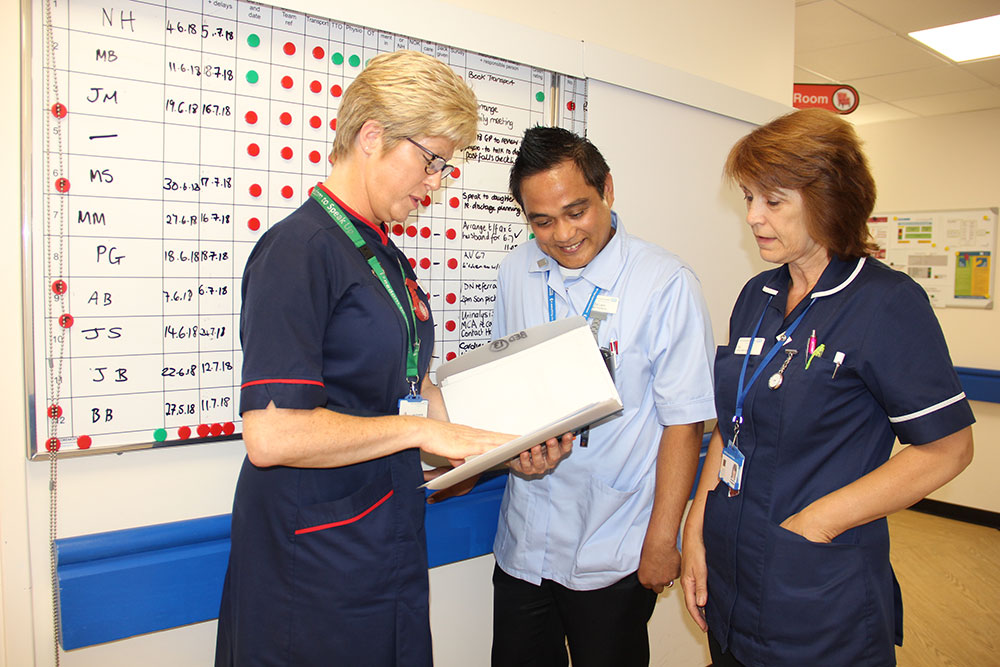A quality improvement project at Hawkhurst Community Hospital is looking at smarter ways of working.
Led by Ward Matron Jane Browning, the ward team is trialling new ways of running shifts – for efficiency, to improve the patient experience and to ensure the health and wellbeing of colleagues.
Jane said: “I took time to slow down, observe and watch what was going on. Too many times, we’re in a situation just getting on with it because the job needs doing and we don’t have time to think about if it’s being done in the right way, the best way or if there’s a different way to achieve the same thing.
“I did that, spoke to staff, asked them for their ideas and
between us we identified our pinch-points so we had a place to start. I’ve got
such a hardworking team, with our 22 beds always full.”
A holistic approach to patient care
Jane wanted to make improvements to both patient care and staff morale.
She said: “Previously, our early shift nurses were aiming to get all patients up, washed and dressed, but not all of them want or need to be up early. However, some prefer to lie-in and others would like their wash later in the day.”
Changes have been made as a result of looking at looking at things with fresh eyes.
Jane said: “We looked at priority – getting the patients who have therapy appointments ready first, then others later, so that therapy sessions aren’t attended late or missed.
“The late or night shift staff can also do later evening washes for patients who prefer to bathe before bed – we do have some night owls amongst our patients – not all are early risers.”
Keeping patients closer to their home routine can also help with their rehabilitation.
Jane said: “We all wanted to get back to a more holistic way
of nursing – to spend time with patients, get to know them, how they like
things done and how they want their day to go. It’s such a lovely place with a
day room, things to do and a very homely feel. We want to make it feel as much
like home as we can – with most of our patients in their nineties.”
Better planned shifts
By looking at the patient needs and the day’s timetable, tasks are now allocated differently, meaning the team has put the busy morning rush behind them.
Jane said: “I have a great team and wanted to look after their wellbeing. I have worked with them to ask what their issues are, taken their suggested solutions on board and made changes to improve things.”
Jane was able to use the process mapping taught in our quality, service improvement and redesign (QSIR) training to work out what she wanted to achieve and how she was going to get there.
The quality improvement project is still in its early stages but it is hoped there will be benefits for patients and the workforce.
Jane said: “Just stopping, making a cup of tea and looking at what we’re doing is making a difference.”


